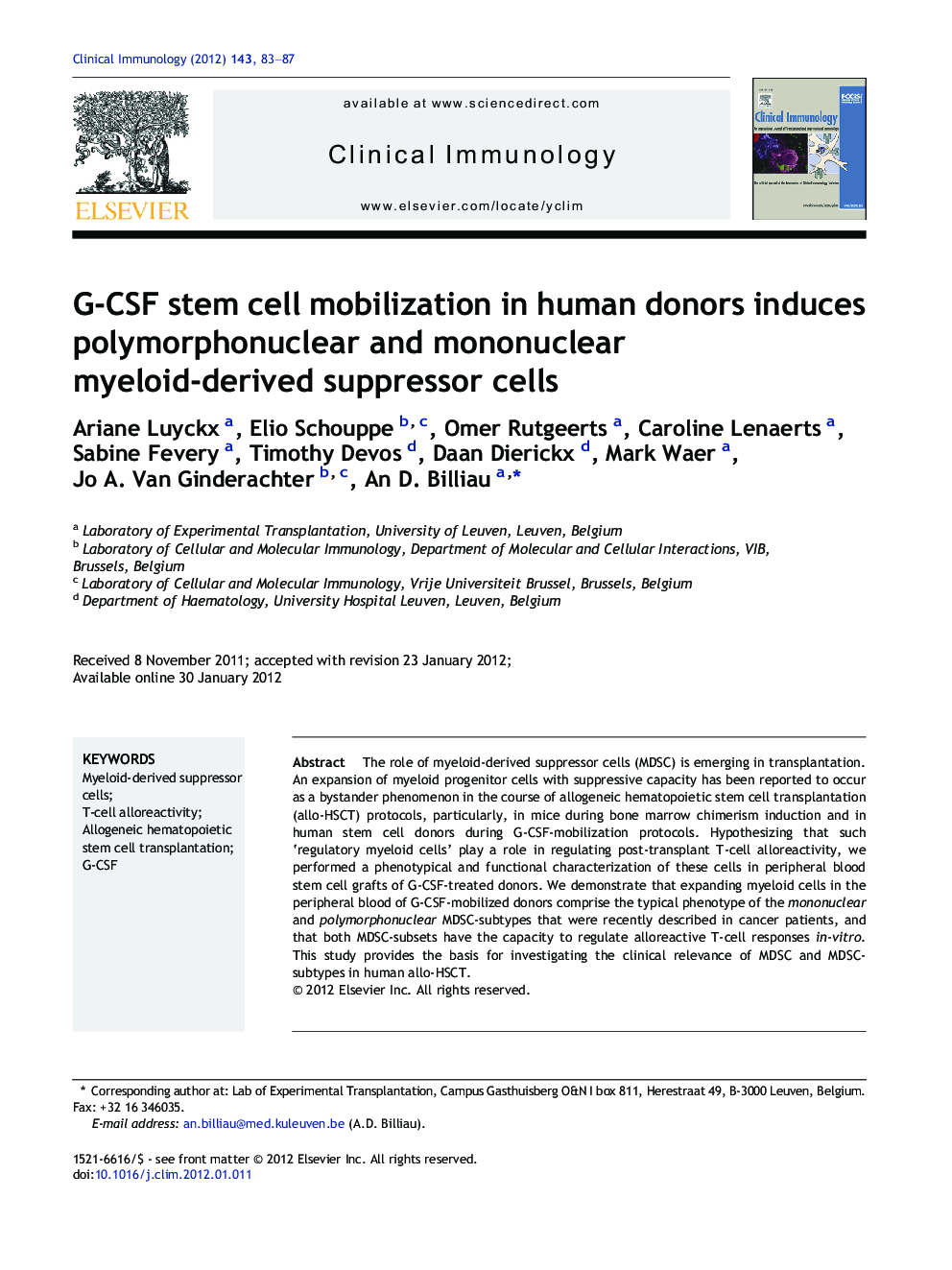| Article ID | Journal | Published Year | Pages | File Type |
|---|---|---|---|---|
| 3257103 | Clinical Immunology | 2012 | 5 Pages |
The role of myeloid-derived suppressor cells (MDSC) is emerging in transplantation. An expansion of myeloid progenitor cells with suppressive capacity has been reported to occur as a bystander phenomenon in the course of allogeneic hematopoietic stem cell transplantation (allo-HSCT) protocols, particularly, in mice during bone marrow chimerism induction and in human stem cell donors during G-CSF-mobilization protocols. Hypothesizing that such ‘regulatory myeloid cells’ play a role in regulating post-transplant T-cell alloreactivity, we performed a phenotypical and functional characterization of these cells in peripheral blood stem cell grafts of G-CSF-treated donors. We demonstrate that expanding myeloid cells in the peripheral blood of G-CSF-mobilized donors comprise the typical phenotype of the mononuclear and polymorphonuclear MDSC-subtypes that were recently described in cancer patients, and that both MDSC-subsets have the capacity to regulate alloreactive T-cell responses in-vitro. This study provides the basis for investigating the clinical relevance of MDSC and MDSC-subtypes in human allo-HSCT.
► Lin− HLA-DR− CD11b+ cells expand in peripheral blood of G-CSF-treated PBSC-donors. ► They comprise two MDSC subsets, analogous to those described in cancer patients. ► Mononuclear MDSC are SSClo CD33hi CD14hi CD15−. ► Polymorphonuclear MDSC are SSChi CD33int CD14lo CD15hi. ► Both subsets have the capacity to regulate alloreactive T-cell responses in-vitro.
